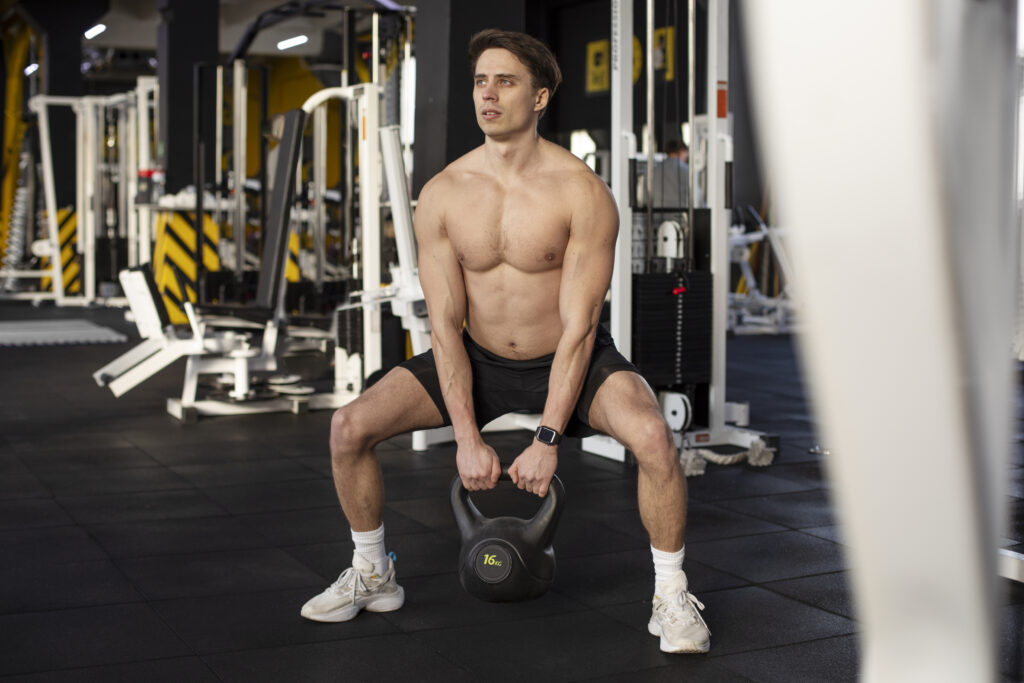Free weight exercises are a cornerstone of strength training, offering unparalleled benefits in muscle development, functional strength, and overall fitness. Whether you’re a novice lifter or an experienced athlete, incorporating free weight exercises into your routine can take your workout to the next level.
1. What Are Free Weight Exercises?
Free weight exercises involve using dumbbells, barbells, kettlebells, and other handheld weights to perform a variety of strength training movements. Unlike machines, which often isolate specific muscles, free weights engage multiple muscle groups and require greater balance and coordination.
2. Benefits of Free Weight Exercises
- Versatility: Adaptable to various exercises targeting different muscle groups.
- Functional Strength: Enhances real-world strength and coordination.
- Balance and Stability: Engages stabilizing muscles, improving balance.
- Range of Motion: Allows for natural movement patterns and greater flexibility.
- Adjustability: Weight can be easily adjusted to match your fitness level and goals.
3. Essential Free Weight Exercises
3.1 Barbell Exercises

Barbell Squat:
- Muscles Worked: Quadriceps, hamstrings, glutes, and core.
- How to Perform: Stand with feet shoulder-width apart, barbell resting on your upper back. Lower your body as if sitting back into a chair, keeping your chest up and knees behind your toes. Push through your heels to return to standing.
Deadlift:
- Muscles Worked: Lower back, glutes, hamstrings, and core.
- How to Perform: Stand with feet hip-width apart, barbell on the floor in front of you. Bend at the hips and knees to grip the bar. Lift the bar by straightening your hips and knees, keeping your back straight and chest up.
Bench Press:
- Muscles Worked: Chest, shoulders, and triceps.
- How to Perform: Lie on a bench with feet flat on the floor. Grip the barbell with hands slightly wider than shoulder-width. Lower the bar to your chest, then press it back up to the starting position.
Bent Over Row:
- Muscles Worked: Back, biceps, and forearms.
- How to Perform: Bend at the hips and knees, keeping your back straight. Grip the barbell with hands shoulder-width apart. Pull the bar towards your lower ribcage, squeezing your shoulder blades together, then lower it back down.
Overhead Press:
- Muscles Worked: Shoulders, triceps, and upper chest.
- How to Perform: Stand with feet shoulder-width apart, with a barbell at shoulder height. Press the bar overhead until the arms are fully extended, then lower it back to the starting position.
3.2 Dumbbell Exercises

Dumbbell Bench Press:
- Muscles Worked: Chest, shoulders, and triceps.
- How to Perform: Lie on a bench with a dumbbell in each hand, palms facing forward. Lower the dumbbells to your chest, then press them back up.
Dumbbell Flyes:
- Muscles Worked: Chest.
- How to Perform: Lie on a bench with a dumbbell in each hand, palms facing each other. Lower the dumbbells in a wide arc until you feel a stretch in your chest, then bring them back up.
Dumbbell Shoulder Press:
- Muscles Worked: Shoulders and triceps.
- How to Perform: Sit or stand with a dumbbell in each hand at shoulder height. Press the dumbbells overhead until arms are fully extended, then lower them back to the starting position.
Dumbbell Row:
- Muscles Worked: Back and biceps.
- How to Perform: Place one knee and hand on a bench for support. Hold a dumbbell in the other hand, pulling it towards your hip while keeping your back straight. Repeat on the other side.
Bicep Curl:
- Muscles Worked: Biceps.
- How to Perform: Stand with a dumbbell in each hand, arms fully extended. Curl the weights towards your shoulders, then lower them back down.
Tricep Extension:
- Muscles Worked: Triceps.
- How to Perform: Hold a dumbbell overhead with both hands. Lower the weight behind your head, then extend your arms to return to the starting position.
View our post with a detailed list of dumbbells
3.3 Kettlebell Exercises

Kettlebell Swing:
- Muscles Worked: Hips, glutes, lower back, and core.
- How to Perform: Stand with feet shoulder-width apart, holding a kettlebell with both hands. Swing the kettlebell between your legs, then thrust your hips forward to swing it up to shoulder height.
Turkish Get-Up:
- Muscles Worked: Full body, particularly core and shoulders.
- How to Perform: Lie on your back with a kettlebell in one hand, arm extended. Stand up while keeping the kettlebell overhead, then return to lying down.
Goblet Squat:
- Muscles Worked: Quadriceps, hamstrings, glutes, and core.
- How to Perform: Hold a kettlebell close to your chest. Perform a squat while keeping the kettlebell steady.
Creating a Free Weight Workout Routine
A balanced free weight workout should target all major muscle groups. Here’s a sample routine:
Warm-Up
- Jump Rope: 2 minutes
- Dynamic Stretches: 5 minutes
Workout
- Barbell Squat: 3 sets of 8-12 reps
- Dumbbell Bench Press: 3 sets of 8-12 reps
- Deadlift: 3 sets of 6-10 reps
- Dumbbell Shoulder Press: 3 sets of 8-12 reps
- Bent Over Row: 3 sets of 8-12 reps
- Bicep Curl: 3 sets of 10-15 reps
- Tricep Extension: 3 sets of 10-15 reps
Cool-Down
- Static Stretches: 5-10 minutes
- Foam Rolling: 5 minutes
check our post about massage & foam rolling
Tips for Success
- Start Light: Begin with lighter weights to master your form before increasing the load.
- Consistent Progression: Gradually increase the weight or number of reps to continually challenge your muscles.
- Form First: Prioritize proper technique to prevent injuries and maximize effectiveness.
- Balanced Routine: Ensure you work all major muscle groups to avoid imbalances.
- Rest and Recovery: Allow adequate recovery time between workouts to promote muscle growth and prevent overtraining.
Conclusion
Free weight exercises are a powerful tool in your strength training arsenal. By incorporating a variety of movements that target different muscle groups, you can build strength, enhance functional fitness, and achieve a well-rounded physique.